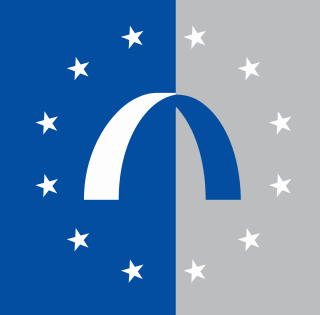Related Research Articles

Erowid, also called Erowid Center, is a non-profit educational organization that provides information about psychoactive plants and chemicals.
A designer drug is a structural or functional analog of a controlled substance that has been designed to mimic the pharmacological effects of the original drug, while avoiding classification as illegal and/or detection in standard drug tests. Designer drugs include psychoactive substances that have been designated by the European Union as new psychoactive substances (NPS) as well as analogs of performance-enhancing drugs such as designer steroids. Some of these were originally synthesized by academic or industrial researchers in an effort to discover more potent derivatives with fewer side effects and shorter duration and were later co-opted for recreational use. Other designer drugs were prepared for the first time in clandestine laboratories. Because the efficacy and safety of these substances have not been thoroughly evaluated in animal and human trials, the use of some of these drugs may result in unexpected side effects.

The European Monitoring Centre for Drugs and Drug Addiction (EMCDDA) is an agency of the European Union located in Lisbon, Portugal, and established in 1993. In June 2022, the Council of the European Union approved a reform of the organization which will lead to an extension of its mandate and a change of name for "European Union Drugs Agency."

Polysubstance use or poly drug use refers to the use of combined psychoactive substances. Polysubstance use may be used for entheogenic, recreational, or off-label indications, with both legal and illegal substances. In many cases one drug is used as a base or primary drug, with additional drugs to leaven or compensate for the side effects, or tolerance, of the primary drug and make the experience more enjoyable with drug synergy effects, or to supplement for primary drug when supply is low.
The drug policy of Portugal, informally called the "drug strategy", was put in place in 2000, and came into effect in July 2001. Its purpose was to reduce the number of new HIV/AIDS cases in the country, as it was estimated around half of new cases came from injection drug use.

Methoxetamine, abbreviated as MXE, is a dissociative hallucinogen that has been sold as a designer drug. It differs from many dissociatives such as ketamine and phencyclidine (PCP) that were developed as pharmaceutical drugs for use as general anesthetics in that it was designed specifically to increase the antidepressant effects of ketamine.

Benzedrone (4-MBC) is a designer drug which has been found since 2010 as an ingredient in a number of "bath salt" mixes sold as recreational drugs.
Council of the European Union decisions on designer drugs. Council of the European Union issued a set of decisions on 7 designer drugs to make them subject to control measures and criminal provisions.

3-(4-Hydroxymethylbenzoyl)-1-pentylindole is a synthetic cannabinoid. It is planned to be scheduled in Poland. It has been reported to the EMCDDA and Europol for the first time in 2010 under the terms of European Council Decision 2005/387/JHA of 10 May 2005 on the information exchange, risk-assessment and control of new psychoactive substances.
Responsible drug use seeks to maximize the benefits and minimize the risks associated with psychoactive drug use. For illegal psychoactive drugs that are not diverted prescription controlled substances, some critics believe that illegal recreational drug use is inherently irresponsible, due to the unpredictable and unmonitored strength and purity of the drugs and the risks of addiction, infection, and other side effects.

α-Pyrrolidinohexiophenone is a synthetic stimulant drug of the cathinone class developed in the 1960s which has been reported as a novel designer drug.

MDMB-CHMICA is an indole-based synthetic cannabinoid that is a potent agonist of the CB1 receptor and has been sold online as a designer drug. While MDMB-CHMICA was initially sold under the name "MMB-CHMINACA", the compound corresponding to this code name (i.e. the isopropyl instead of t-butyl analogue of MDMB-CHMINACA) has been identified on the designer drug market in 2015 as AMB-CHMINACA.

Methoxypiperamide is a psychoactive drug of the piperazine class that has been sold online as a designer drug. It is the 4-methoxy-α-keto analog of methylbenzylpiperazine.

N-Ethylhexedrone (also known as α-ethylaminocaprophenone, N-ethylnorhexedrone, hexen, and NEH) is a stimulant of the cathinone class that acts as a norepinephrine–dopamine reuptake inhibitor (NDRI) with IC50 values of 0.0978 and 0.0467 μM, respectively. N-Ethylhexedrone was first mentioned in a series of patents by Boehringer Ingelheim in the 1960s which led to the development of the better-known drug methylenedioxypyrovalerone (MDPV). Since the mid-2010s, N-ethylhexedrone has been sold online as a designer drug. In 2018, N-ethylhexedrone was the second most common drug of the cathinone class to be identified in Drug Enforcement Administration seizures.
Drug checking or pill testing is a way to reduce the harm from drug consumption by allowing users to find out the content and purity of substances that they intend to consume. This enables users to make safer choices: to avoid more dangerous substances, to use smaller quantities, and to avoid dangerous combinations.

Difludiazepam (Ro07-4065) is a benzodiazepine derivative which is the 2',6'-difluoro derivative of fludiazepam. It was invented in the 1970s but was never marketed, and has been used as a research tool to help determine the shape and function of the GABAA receptors, at which it has an IC50 of 4.1nM. Difludiazepam has subsequently been sold as a designer drug, and was first notified to the EMCDDA by Swedish authorities in 2017.

3-Chloromethcathinone, also known as clophedrone or 3-CMC, is a synthetic substance belonging to the cathinone class of psychoactive compounds. It is very similar in structure to other cathinone derivatives like metaphedrone (3-MMC) or clephedrone (4-CMC)., Unlike cathinone, which occurs naturally in the khat plant Catha edulis, 3-CMC is not found in nature and is solely produced through chemical synthesis.,

4-EA-NBOMe is a substituted amphetamine and 25-NB derivative which has been sold as a designer drug. It was first identified by a forensic laboratory in Germany in 2014, but while its analytical properties and metabolism have been studied, its pharmacology remains unknown.

5-Methylmethiopropamine is a stimulant drug which is a ring-substituted derivative of methiopropamine. It is not a substituted cathinone derivative like mephedrone, as it lacks a ketone group at the β position of the aliphatic side chain, but instead more closely resembles substituted amphetamines. It has been sold as a designer drug, first being identified in Germany in June 2020.
Synthetic drugs refer to substances that are artificially modified from naturally-occurring drugs and are capable of exhibiting both therapeutic and psychoactive effects.
References
- 1 2 Bücheli, Alexander; the Trans-European Drug Information project (2013). Drug Checking Consultation and Counselling Guidelines (PDF). Barcelona: Nightlife Empowerment & Wellbeing Implementation Project.
- ↑ Caldicott, David (22 February 2017). "Yes, we can do on-the-spot drug testing quickly and safely". The Conversation. Retrieved 2022-09-01.
- ↑ Trans European Drugs Information (TEDI) workgroup (2011). Factsheet on Drug Checking in Europe (PDF). Brussels: Nightlife, Empowerment & Well-being Implementation Project.
- ↑ Zaami, S (2019-11-01). "New psychoactive substances: concerted efforts and common legislative answers for stemming a growing health hazard". European Review for Medical and Pharmacological Sciences. 23 (22): 9681–9690. doi:10.26355/eurrev_201911_19529. ISSN 2284-0729. PMID 31799633. S2CID 208621146.
- ↑ Oomen, Pieter E.; Schori, Dominique; Tögel-Lins, Karsten; Acreman, Dean; Chenorhokian, Sevag; Luf, Anton; Karden, Alexandra; Paulos, Carlos; Fornero, Elisa; Gerace, Enrico; Koning, Raoul P. J.; Galindo, Liliana; Smit-Rigter, Laura A.; Measham, Fiona; Ventura, Mireia (2022-02-01). "Cannabis adulterated with the synthetic cannabinoid receptor agonist MDMB-4en-PINACA and the role of European drug checking services". International Journal of Drug Policy. 100: 103493. doi:10.1016/j.drugpo.2021.103493. ISSN 0955-3959. PMID 34687992. S2CID 239482166.
- 1 2 The Trans-European Drug Information project (2022). "About us – TEDI". tedinetwork.org. Retrieved 2022-09-01.
- ↑ Brunt, Tibor M.; Nagy, Constanze; Bücheli, Alexander; Martins, Daniel; Ugarte, Miren; Beduwe, Cécile; Ventura Vilamala, Mireia (2017). "Drug testing in Europe: monitoring results of the Trans European Drug Information (TEDI) project". Drug Testing and Analysis. 9 (2): 188–198. doi:10.1002/dta.1954. PMID 26888408.
- ↑ The Trans-European Drug Information project (2022-03-31). "Story map: "Fieldwork drug checking services from 13 different European countries"". ArcGIS StoryMaps. Retrieved 2022-09-01.
- ↑ European Monitoring Centre for Drugs and Drug Addiction (2019-10-22). "International symposium on drug checking". emcdda.europa.eu. Retrieved 2022-09-01.
- ↑ European Monitoring Centre for Drugs and Drug Addiction (2021-12-08). "EMCDDA-TEDI network meeting of European drug checking services | www.emcdda.europa.eu". www.emcdda.europa.eu. Retrieved 2022-09-01.
- ↑ "TripApp - Apps on Google Play". play.google.com. Retrieved 2022-09-01.
- ↑ Lekhtman, Alexander (2019-12-31). "The 'TripApp' Helps You Make Safer Choices About Your Drug Use". FilterMag. Retrieved 2022-09-01.
- ↑ Pompidou Group, Newsroom (2021). "European Drug Prevention Prize: winning projects from Belgium, Poland and Lithuania". Council of Europe .
- ↑ "Guidelines". TEDI project. 2015.
- ↑ Creixell, Maria (2022-03-31). "The European network of drug checking services TEDI is launching a website to share information on the drug markets". ABD. Retrieved 2022-09-01.